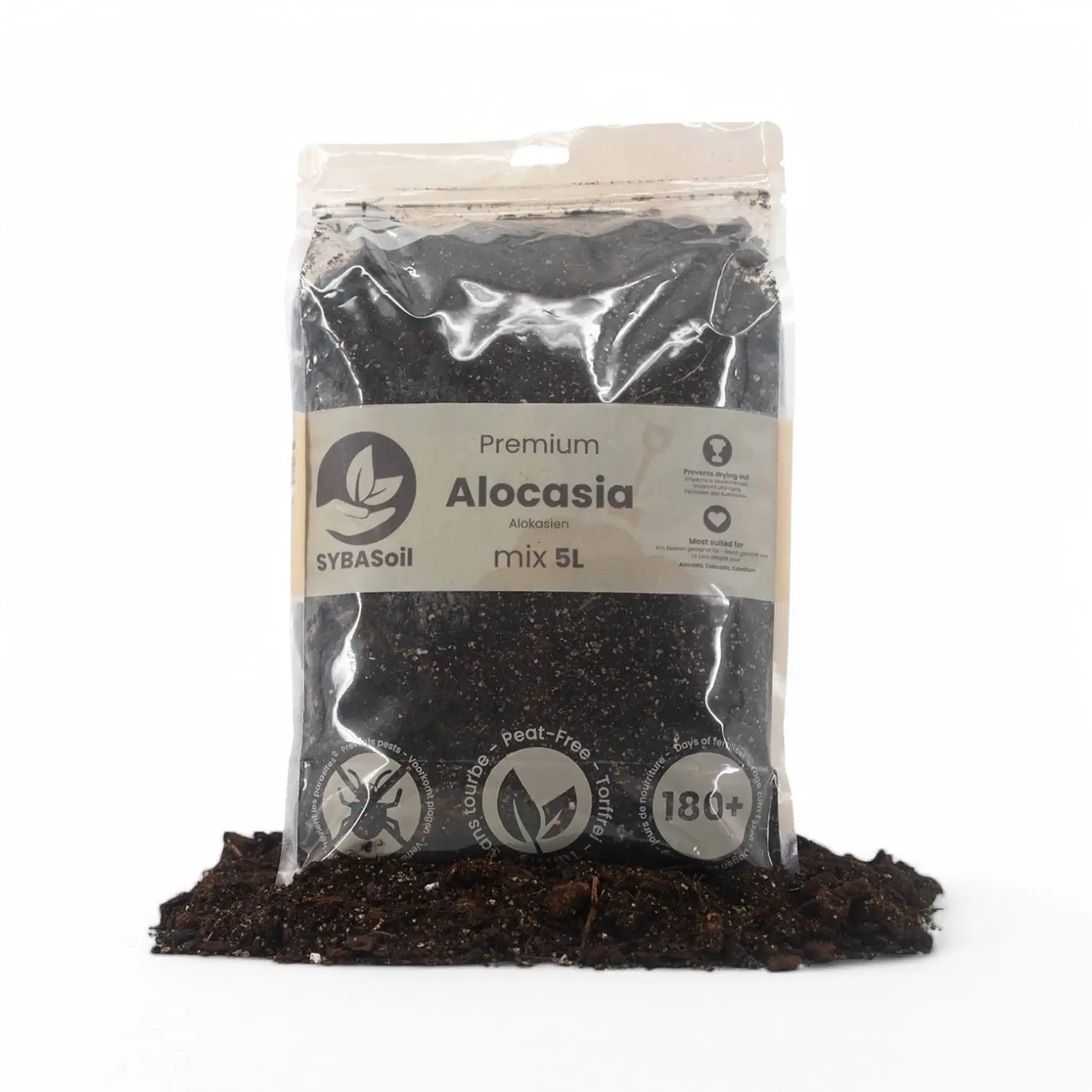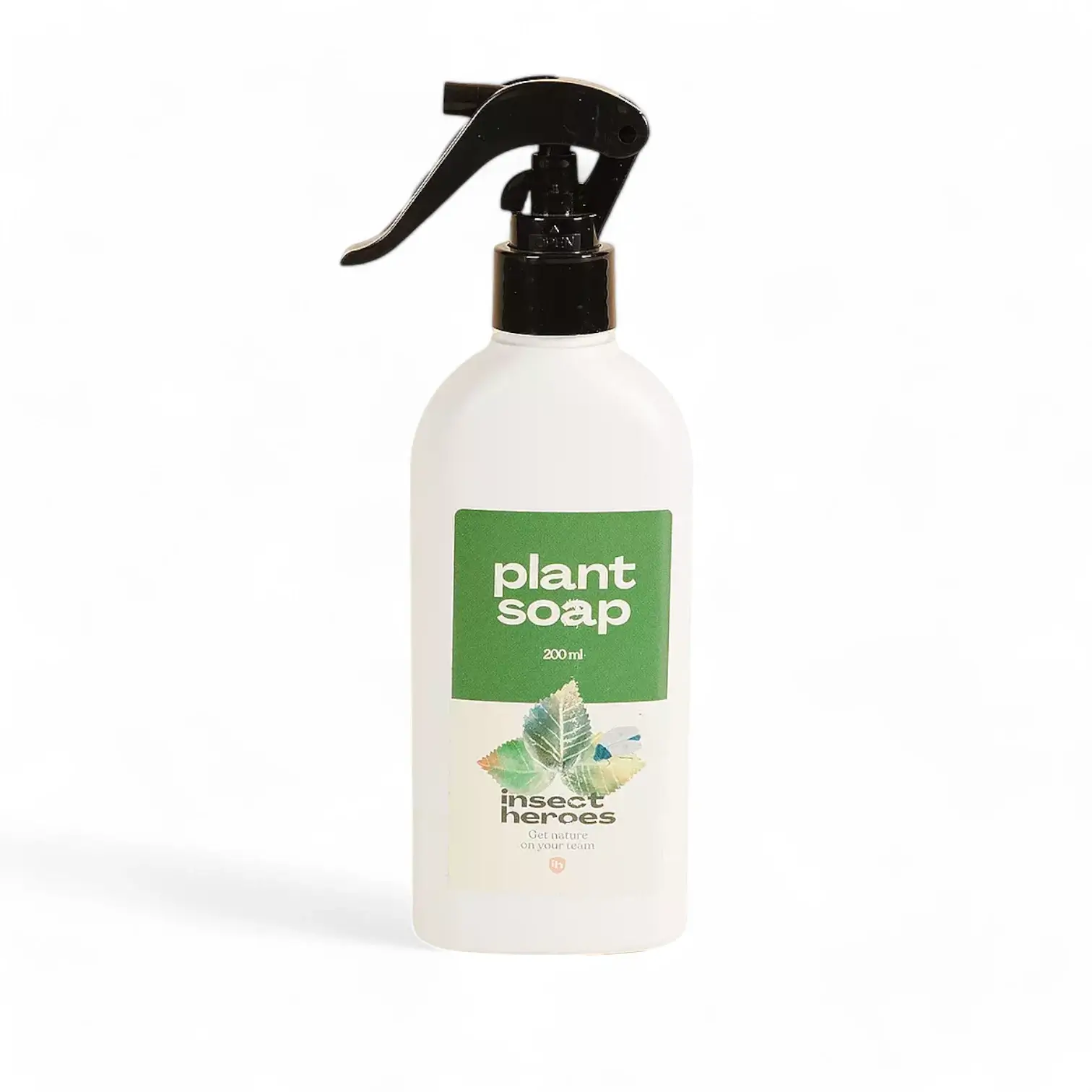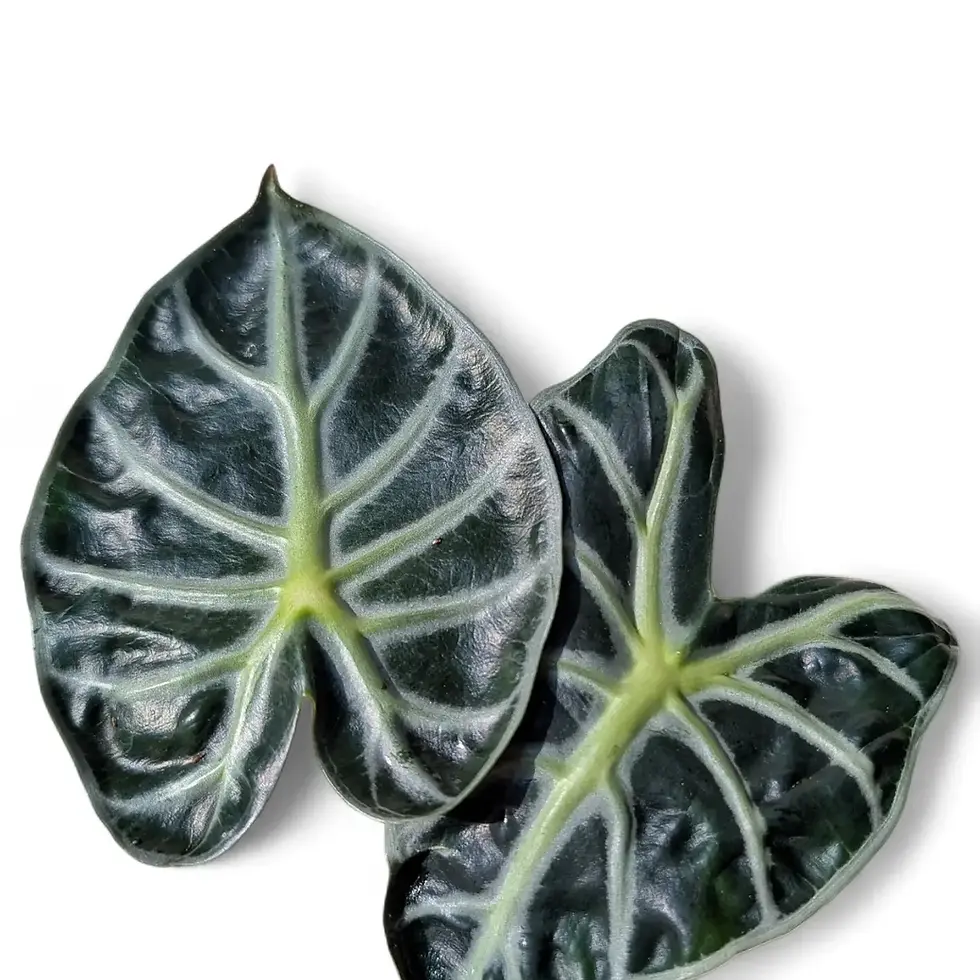
Alocasia Plants
Botanical Insights, Indoor Care, and Growing Tips
Alocasia is a genus of tropical perennials in the Araceae family, renowned for its striking, arrowhead-shaped foliage and bold venation. With over 90 recognized species and countless hybrids, these plants range from compact ornamental varieties to giant forms like Alocasia macrorrhizos, whose leaves can surpass one meter in length. Each plant is a living statement piece, transforming interiors into vibrant, architectural spaces. Natural Origin & Requirements Native to the humid rainforests of Asia and Oceania, Alocasias evolved in environments with bright, filtered light, constant warmth, and high humidity. These conditions define their care indoors: precise watering, stable temperatures, and a well-aerated substrate are essential for success. While their needs are greater than those of typical houseplants, the reward is unmatched foliage and vigorous growth. What This Guide Covers ✔ An in-depth botanical profile and ecological background ✔ Professional care strategies for light, humidity, soil, and nutrition ✔ Interior styling tips for maximum visual impact ✔ Propagation techniques for sustainable growth ✔ A detailed troubleshooting and FAQ section for common problems This is the definitive resource for anyone serious about growing Alocasia, built on proven horticultural practices and advanced grower insights.
Alocasia — Popular Trade & Common Names
-
Elephant Ear
Widely used for large species like A. macrorrhizos, A. odora, and A. robusta.
⚠ Note: Also used for Colocasia and Xanthosoma, which causes confusion.
-
African Mask Plant
Commonly applied to hybrids such as Alocasia ‘Polly’ and ‘Amazonica’.
⚠ Misleading — these plants are native to Asia, not Africa.
-
Kris Plant
Name inspired by the wavy, dagger-like edges resembling a traditional Kris blade. Usually refers to ‘Amazonica’ hybrids.
-
Taro (Misapplied)
Occasionally used for A. macrorrhizos, though true taro is Colocasia esculenta.
-
Giant Taro / Giant Elephant Ear
Specifically refers to A. macrorrhizos, historically cultivated as an emergency food crop.
-
Mirror Plant
Trade name sometimes used for species with metallic foliage, such as A. cuprea.
-
Amazon Elephant Ear
Marketing name for Alocasia ‘Amazonica’ hybrids.
Regional Vernacular Names
-
Biga / Biga-Biga – Philippines (applied to A. macrorrhizos).
-
Paiang / Hape – Traditional names in the Pacific Islands.
-
Telinga Hathi – India (literally “Elephant Ear” in Hindi).
💡 Did you know?
Not all plants called “Elephant Ear” are Alocasia. The term also includes Colocasia and Xanthosoma, which differ in petiole attachment and growth habits.
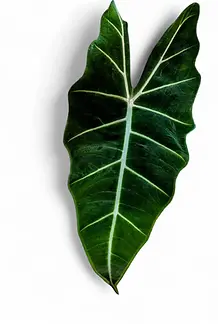
Alocasia
Pronunciation:
/ˌæləˈkeɪʒə/ (al-uh-KAY-zhuh) or /ˌæləˈkeɪʃə/ (al-uh-KAY-shuh)
Name Origin:
Derived from Greek a- (“without”) + Colocasia, marking its taxonomic separation from the related genus.
First Description:
Formally described by Heinrich Wilhelm Schott in 1832, published in Melet. Bot.
Taxonomic Classification:
-
Kingdom: Plantae
-
Order: Alismatales
-
Family: Araceae
-
Subfamily: Aroideae
-
Tribe: Colocasieae
-
Genus: Alocasia (Schott) G.Don
Diversity:
Approximately 90 accepted species, along with numerous hybrids and ornamental cultivars.
Native Distribution:
Tropical and subtropical Asia, extending through India, southern China, Southeast Asia, Malesia, New Guinea, and into northeastern Australia.
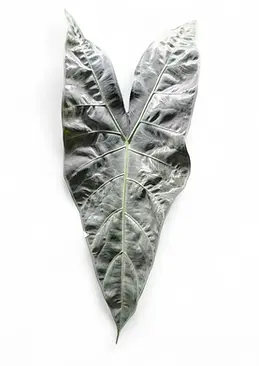
Alocasia Plant Guide: Care Tips, Origins, and Advice
💡 Did You Know?
Some Alocasia species exhibit thermogenesis, meaning their inflorescences can generate heat. This helps volatilize scents that attract specific pollinators like beetles.
Alocasia – Quick Genus Guide
Classification
-
Family: Araceae
-
Subfamily: Aroideae
-
Tribe: Colocasieae
-
Genus: Alocasia (Schott) G.Don
-
Type Species: Alocasia cucullata (Lour.) G.Don
General Information
-
Number of Species: ~90 accepted species
-
Common Names: Elephant’s ear, Giant taro (only for A. macrorrhizos)
-
Native Range: Tropical and subtropical Asia to eastern Australia (India → Malesia → New Guinea → Queensland)
-
Growth Habit: Rhizomatous or tuberous perennial herbs; some develop short stems or palm-like trunks
-
Flowering Structure: Spadix with bisexual zone, subtended by a spathe; flowers inconspicuous and often hidden behind petioles
Foliage & Features
-
Leaf Shape: Sagittate or cordate (arrowhead to heart-shaped); some linear-lanceolate in specialized species
-
Size: Typically 20–90 cm (8–35 in) long; petioles may exceed 1 m in large species
-
Color & Texture: Glossy green, metallic, or patterned with silver/white; ornamental hybrids often have striking venation
-
Venation: Primary veins radiate from petiole junction, often contrasting in color
-
Special Trait: Some species produce thermogenic inflorescences (heat generation to attract pollinators)
Size & Growth
-
Height: From 30–50 cm (dwarf species) to over 3 m (A. macrorrhizos)
-
Spread: 30 cm to 1 m indoors; much larger outdoors
-
Growth Rate: Moderate to rapid in optimal warmth and humidity; slows during cool/dry periods
-
Dormancy: Many species exhibit seasonal dormancy; rhizomes remain viable during rest phase
Environmental Preferences
-
Light: Bright, indirect light; filtered sun outdoors; avoid prolonged direct exposure
-
Temperature: Ideal 22–30 °C; injury below 10 °C; prolonged cold can induce dormancy or death
-
Humidity: High humidity (60–80%) prevents leaf edge necrosis
-
Soil pH: Slightly acidic to neutral (5.5–6.5)
-
Hardiness Zones: USDA 10–12
💡 Did You Know?
The largest Alocasia, A. macrorrhizos, can develop leaves over 1.5 m long, making it one of the most dramatic foliage plants in the Araceae family.
Potential Issues & Stress Signals
-
Yellow Leaves: Often overwatering; check for anaerobic conditions
-
Brown Edges: Low humidity or uneven watering
-
Drooping: Root stress, dehydration, or corm rot
-
Pests: Spider mites, thrips, mealybugs; inspect undersides of leaves regularly
-
Diseases: Root rot (Pythium/Phytophthora); viral infections (Dasheen Mosaic Virus in collections)
Toxicity & Safety
-
Toxic Principle: Calcium oxalate crystals (raphides) + proteolytic enzymes
-
Symptoms: Intense oral irritation, swelling of mouth/throat, drooling, vomiting if ingested
-
Precautions: Keep away from children and pets; wear gloves when handling cut tissue
Soil & Watering
-
Soil Type: Loose, aerated, moisture-retentive mix with organic matter + drainage (bark, perlite, coco coir)
-
Watering: Keep evenly moist but never waterlogged; allow top layer (~2 cm) to dry before rewatering
-
Drainage: Crucial to avoid corm rot; never let pots sit in water
-
Water Quality: Use rainwater, distilled, or low-mineral tap water if possible
-
Salt Buildup: Flush soil every 6–8 weeks during growth to prevent fertilizer accumulation
Care & Maintenance
-
Fertilizer: Balanced liquid or slow-release fertilizer; feed lightly but regularly in active growth
-
Pruning: Remove yellowing or damaged leaves cleanly at base; avoid injuring the corm
-
Repotting: Every 1–2 years or when rhizomes crowd the container
-
Rotation: Turn pots monthly for even growth
-
Cleaning: Gently wipe leaves to remove dust and reduce pest risk
Propagation & Longevity
-
Rhizome Division: Primary method; divide during repotting when growth resumes
-
Offsets (Pups): Detach basal shoots and pot separately
-
Cormels: Plant small tuber-like growths; slower but effective for rare species
-
Seeds: Possible after controlled pollination, but rare indoors; tissue culture common in commercial production
-
Lifespan: Decades with correct care; clumps enlarge and multiply over time
💡Did You Know?
Alocasia flowers are highly specialized: the spadix contains both male and female zones, and blooming is often synchronized with temperature and humidity peaks to optimize pollination.
💡Did You Know?
Several Alocasia species have heterophyllous leaves, meaning juvenile and mature foliage have different shapes — a survival strategy linked to light availability and predator deterrence.
Want to Learn More About Alocasia?
Dive into our blog for in-depth articles covering every aspect of Alocasia care. From practical tips on watering and lighting to propagation techniques and problem-solving strategies, our resources are designed to help you succeed. You’ll also find species-specific guides for both popular and rare Alocasia varieties, giving you the knowledge to grow these spectacular plants with confidence. Everything you need to master Alocasia care is just a click away.
Explore Our Alocasia Collection
Step into the world of Alocasia — a genus that turns foliage into art. From compact hybrids with striking vein patterns to bold giants with architectural leaves, these plants are the ultimate statement pieces for modern interiors and curated collections.
Whether you’re drawn to velvety textures, metallic tones, or the sheer drama of giant elephant ears, our selection includes something extraordinary for every plant enthusiast.
➜ Browse All Alocasia Varieties and find the centerpiece your home or collection deserves.
💡Tip:
Every listing includes an in-depth care profile with practical advice on light, watering, and humidity management, plus solutions for common challenges. Grow with confidence—your Alocasia guide is built in.
Most Popular Alocasias: Bestselling Varieties That Define the Look
Our top-selling Alocasias represent the styles that dominate today’s plant collections. These selections stand out for strong architectural forms, striking venation, and bold leaf structure—features that make the genus a centerpiece in modern interior design.
This collection brings together customer favorites and collector staples, from sculptural giants to compact varieties suited for smaller spaces. Each one reflects the demand for plants that deliver visual impact and authentic tropical character.
Easy-Care Alocasia Varieties for Modern Homes
Looking for Alocasia plants that combine tropical style with straightforward care? Our selection of low-maintenance varieties is ideal for growers who want dramatic foliage without demanding routines. These Alocasias adapt well to bright, filtered light and moderate humidity, making them more forgiving than other members of the genus. From compact hybrids with bold veining to larger forms with sculptural leaves, each option offers visual impact while remaining practical for everyday plant care.
Rare and Unique Alocasia Varieties
Certain Alocasias display leaf characteristics that look almost unreal. Some feature metallic or iridescent surfaces that shift in tone with changing light, while others have dramatically textured blades that appear rippled or sculpted. A few exhibit narrow, elongated, or deeply lobed shapes that break away from the typical heart or arrow form. These distinctive traits make rare Alocasias highly sought after by plant enthusiasts, as they combine architectural presence with a sense of natural artistry, transforming any collection into something extraordinary.
All our Alocasia Varieties
To browse all currently available Alocasia Plants, head to the Alocasia Collection in the Shop. Each plant comes with its own detailed description and plant care advice.






